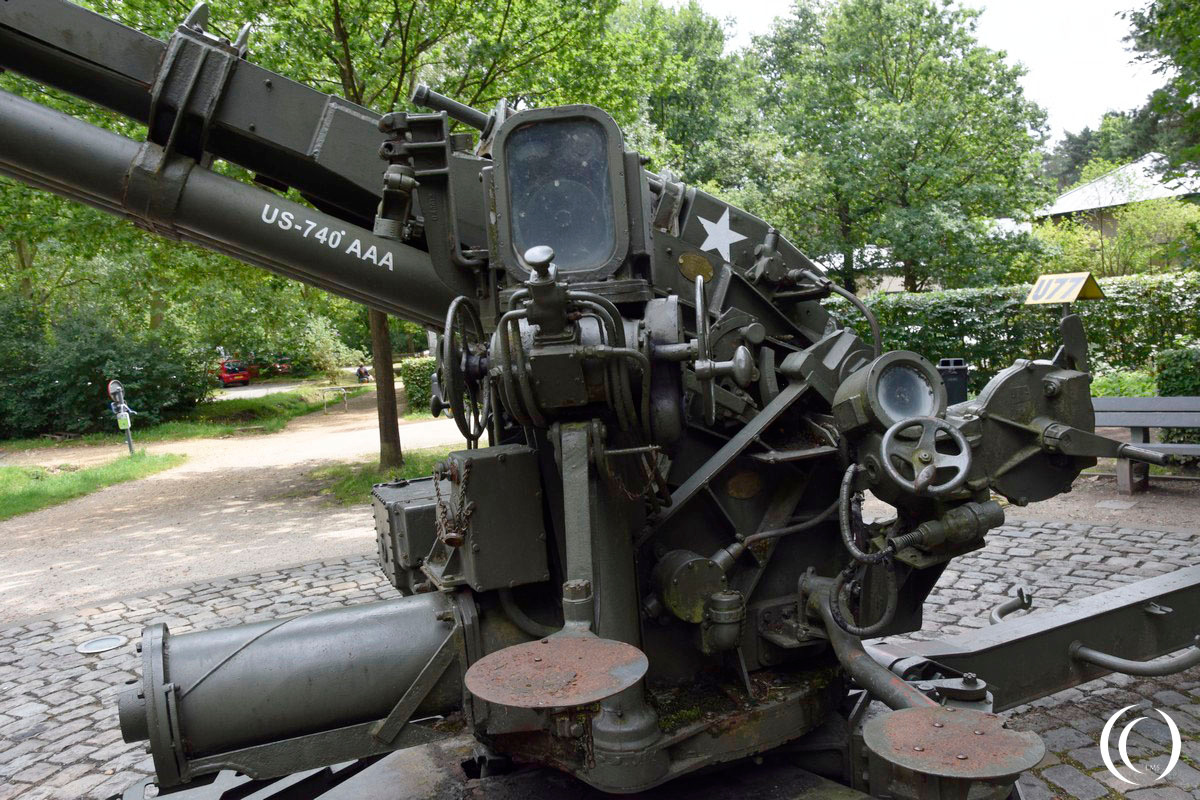
The 90 mm field gun was an American heavy anti-aircraft (M1) and anti-tank (M2) gun used during WW2, designed for a similar role as the infamous German 8.8cm Flak gun. The gun could fire shells at a maximum altitude of 13.3 km (43,500 ft) and a 19 km (62,474 ft) maximum range on ground targets.
The standardized 90 mm M1 gun was the US Army’s primary heavy anti-aircraft gun in early 1940 together with a much larger version, the 120mm M1. The improved 90 mm M1A1 version became standardized in May 1941, which had alterations on the breech to increase it’s firing rate up to 20 rounds a minute. With the production rate going up to a few thousand a month during the war, the M1A1 remained the standaard US Anti-Aircraft gun during WW2. After 1943 the United States Army Coast Artillery Corps also used the gun as a coastal defense weapon.
The 90 mm was also adapted as a tank gun (M3). It was first tested in an M10 Tank Destroyer in early 1943. After this it became the main weapon of the M36 tank destroyer and M26 Pershing tank.

Rocket Shield for Antwerp
In October 1944 the Belgian city of Antwerp was liberated from the Germans. But with this the city gets an important role in the war as its port becomes the main port for the Allied Forces, making Antwerp a key target for the Germans who aim their V-1 bombs from Germany and the North of The Netherlands to strike at the city. To counter the threat, the Americans placed a “Rocket Shield” in the area of Kalmthout, Belgium, with a large battery of 90 mm M1A1 AA guns. The area is ideally situated along the trajectory of the incoming V-1s and so many are destroyed before reaching their target.
This 90 mm M1A1 Anti-Aircraft gun is placed here as a memorial to commemorate the defense of the City of Antwerp against the German V weapon attacks.






